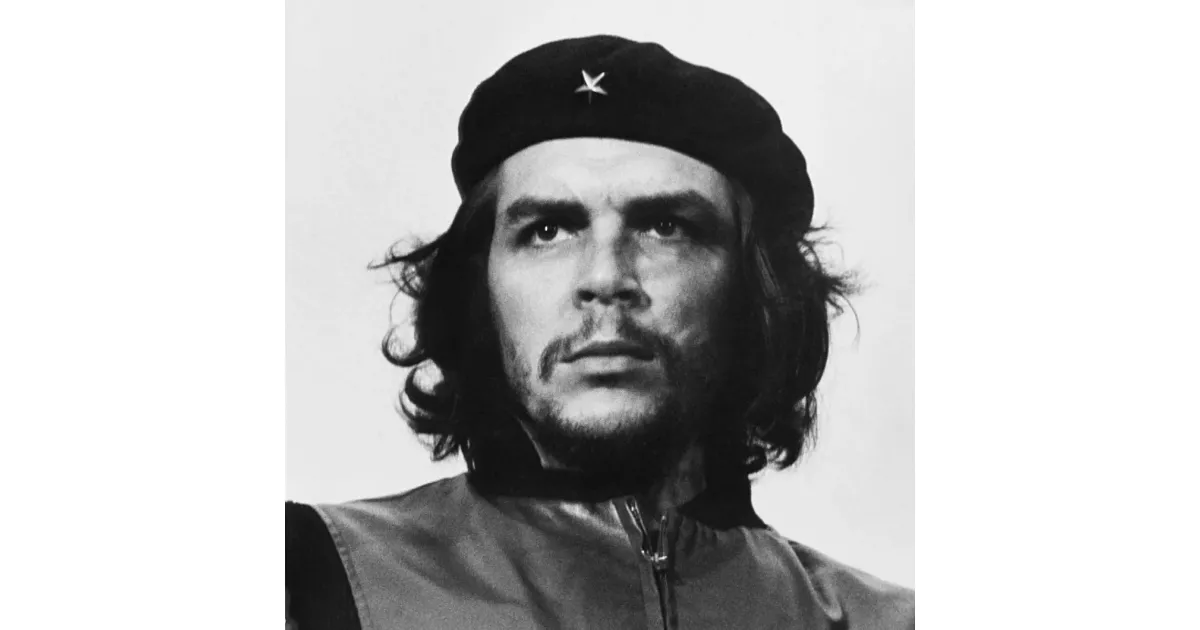Discover the career path of Che Guevara, from the first major opportunity to industry-changing achievements.
Ernesto "Che" Guevara was a prominent Argentine Marxist revolutionary, physician, and guerrilla leader. He played a key role in the Cuban Revolution and became a significant figure in the Cuban government. Beyond his involvement in Cuba, Guevara sought to spread revolution to other countries, particularly in Africa and South America. His efforts often involved guerrilla warfare and promoting socialist ideologies. Despite his controversial legacy, Guevara remains a globally recognized symbol of rebellion and revolutionary ideals, often seen as a countercultural icon.
June 1953: Medical Degree
In June 1953, Ernesto Guevara completed his studies and received his medical degree.
September 1954: Arrival in Mexico City
In September 1954, Guevara arrived in Mexico City, where he worked in the allergy section of the General Hospital and at the Hospital Infantil de Mexico, lectured on medicine at the National Autonomous University of Mexico, and worked as a news photographer for Latina News Agency.
June 1955: Meeting Fidel Castro
In June 1955, Ñico López introduced Guevara to Raúl Castro, who then introduced him to Fidel Castro. Guevara joined the 26th of July Movement.
November 1956: Granma sets out for Cuba
In November 1956, Castro's revolutionary plan commenced with an assault on Cuba from Mexico via the Granma. Upon landing, Batista's military attacked, resulting in many deaths. During this confrontation, Che Guevara swapped his medical supplies for ammunition, marking a symbolic moment.
February 1958: Creation of Radio Rebelde
In February 1958, Guevara was instrumental in creating the clandestine radio station Radio Rebelde, which broadcast news to the Cuban people and provided radiotelephone communication between rebel columns. Guevara was inspired by the effectiveness of CIA-supplied radio in Guatemala.
July 1958: Critical role in the Battle of Las Mercedes
In July 1958, Guevara played a critical role in the Battle of Las Mercedes by halting a force of 1,500 men. He became an expert at hit-and-run tactics against Batista's army.
December 1958: Taking Las Villas province
In December 1958, Guevara led a new column westward, cutting the island in half by taking Las Villas province. He executed a series of tactical victories, gaining control of the province except for Santa Clara. He then directed his suicide squad in the attack on Santa Clara, leading to the final military victory of the revolution.
1958: Radio Rebelde reports capture of Santa Clara
On New Year's Eve of 1958, Radio Rebelde broadcasted the capture of Santa Clara by Guevara's column. This report contradicted the controlled national media's claims, which had earlier announced Guevara's supposed death.
January 1959: Guevara becomes commander of La Cabaña Fortress prison
In January 1959, Castro appointed Guevara commander of La Cabaña Fortress prison. He was tasked with purging the Batista army and exacting "revolutionary justice".
January 1959: Start of the Tarará Group
In mid-January 1959, Guevara started the Tarará Group, which debated and formed new plans for Cuba's social, political, and economic development. He also began writing his book Guerrilla Warfare. In late January, he told Hilda Gadea he was involved with another woman.
January 1959: Batista flees Cuba, Guevara enters Havana
On January 1, 1959, Batista fled Cuba. On January 2, Guevara entered Havana to take control of the capital. Fidel Castro arrived six days later, on January 8, 1959.
January 1959: Speech on social ideas of the rebel army
On January 27, 1959, Guevara delivered a speech emphasizing that the new Cuban government's main concern was "the social justice that land redistribution brings about."
May 1959: Implementation of the agrarian reform law
On May 17, 1959, the agrarian reform law, crafted by Guevara, went into effect. It limited the size of all farms to 1,000 acres and expropriated holdings over that limit.
June 1959: Guevara's three-month tour of Bandung Pact countries
On June 12, 1959, Castro sent Guevara on a three-month tour of mostly Bandung Pact countries. In Jakarta, he met with Indonesian president Sukarno. Guevara spent 12 days in Japan negotiating trade relations.
June 1959: End of Guevara's Tenure at La Cabaña
On June 12, 1959, Guevara's five-month tenure as commander of the La Cabaña Fortress prison came to an end.
July 1960: Guevara denounces U.S. economic aggression
In July 1960, after the United States reduced imports of Cuban sugar, Guevara addressed over 100,000 workers at a rally in front of the Presidential Palace, denouncing the "economic aggression" of the United States. Time Magazine reporters described Guevara as guiding Cuba with "icy calculation, vast competence, high intelligence, and a perceptive sense of humor" around this time.
September 1960: Guevara defines Cuban revolution as Marxist
In September 1960, at the First Latin American Congress, when asked about Cuba's ideology, Guevara defined it as Marxist, stating that the revolution discovered the paths that Marx pointed out. He cited Karl Marx as his ideological inspiration and defended his political stance.
December 1960: Guevara signs trade agreement in East Berlin
At the end of 1960, as part of establishing closer commercial relationships with Eastern Bloc states, Guevara visited East Berlin and signed a trade agreement there on 17 December 1960. While in East Germany, he met Tamara Bunke (later known as "Tania"), who was assigned as his interpreter.
1960: Guevara promotes rapid industrialization
In 1960, Guevara began promoting an idea of rapidly industrializing Cuba, and diversifying Cuba's agriculture.
March 3, 1961: Announcement of accelerated industrialization
On March 3, 1961, as head of the Ministry of Industries, Guevara announced on the radio program People's University that "accelerated industrialization" would require the centralization of all economic decision making.
August 1961: JUCEPLAN announces economic growth target
In August 1961, Regino Boti, the head JUCEPLAN, the central planning board of Cuba, announced that the country would soon have a 10% rate of economic growth.
August 1961: Guevara at economic conference in Uruguay
In August 1961, during an economic conference of the Organization of American States in Punta del Este, Uruguay, Che Guevara sent a note of "gratitude" to United States President John F. Kennedy through Richard N. Goodwin, Deputy Assistant Secretary of State for Inter-American Affairs. Guevara antagonistically attacked the United States' claim of being a "democracy", speaking out against the "persecution" that in his view "drove scientists like Oppenheimer from their posts, deprived the world for years of the marvelous voice of Paul Robeson, and sent the Rosenbergs to their deaths against the protests of a shocked world."
1961: Cuban Literacy Campaign
In 1961, the Cuban government, at Guevara's behest, dubbed 1961 the "year of education" and mobilized over 100,000 volunteers into "literacy brigades" to construct schools, train new educators, and teach the guajiros (peasants) to read and write. By the completion of the Cuban literacy campaign in 1961, 707,212 adults had been taught to read and write, raising the national literacy rate to 96%.
March 1962: Guevara admits failure of economic plan
In March 1962, Guevara admitted in a speech that the economic plan was a failure, specifically stating it was "an absurd plan, disconnected from reality, with absurd goals and imaginary resources."
August 1962: Guevara signs missile agreement with Soviets
On 30 August 1962, Che Guevara traveled to the Soviet Union to sign off on the final agreement regarding the Soviet Union planting nuclear missiles in Cuba. Guevara argued with Khruschev that the missile deal should be made public but Khruschev insisted on secrecy.
October 1962: Cuban Missile Crisis
In October 1962, the Cuban Missile Crisis occurred. Guevara played a key role in bringing Soviet nuclear missiles to Cuba, bringing the world to the brink of nuclear war.
1962: Cuban Missile Crisis
In 1962, Che Guevara played a central role in bringing Soviet nuclear-armed ballistic missiles to Cuba, which preceded the Cuban Missile Crisis.
1963: Sugar production decline and Guevara's resignation
In 1963, Cuba's sugar harvest brought in 3.8 million tons, the lowest in over twenty years. General food production was also down per capita by 40% for the next three years. Castro began to emphasize sugar production in economic planning, and Guevara resigned from his position as head of the Ministry of Industries.
1963: Guevara publishes Against bureaucratism
In February 1963, Guevara published the essay Against bureaucratism, which discussed the "guerrillaism" of the Cuban leadership, the need for bureaucratization, and the new need to de-bureaucratize to end idleness in production.
December 1964: Che Guevara addresses the United Nations
In December 1964, Che Guevara, as head of the Cuban delegation, traveled to New York City and addressed the United Nations. On December 11, 1964, he criticized the UN's inaction against apartheid in South Africa and denounced the United States' policy towards their black population.
1964: Guevara publishes The Cuban Economy: Its Past, and Its Present Importance
In 1964, Guevara published an article, titled The Cuban Economy: Its Past, and Its Present Importance, which analyzed the recent failure of Guevara's economic plans where he states that he committed "two principle errors": the diversification of agriculture, and dispersing resources evenly for various agricultural sectors.
February 1965: Last Public Appearance on the International Stage
On February 24, 1965, in Algiers, Algeria, Guevara made his last public appearance on the international stage, delivering a speech at an economic seminar on Afro-Asian solidarity. He criticized socialist countries for complicity with Western exploiters and outlined measures for the communist bloc to defeat imperialism.
April 1965: Guevara arrives in Congo to support the Simba movement
On April 24, 1965, Guevara, under the alias Ramón Benítez, arrived in Congo with a Cuban expedition to support the leftist Simba movement. They collaborated with Laurent-Désiré Kabila. Guevara stated that Patrice Lumumba’s murder should be a lesson for all.
October 1965: Castro reveals Guevara's farewell letter
On October 3, 1965, Castro publicly revealed Che Guevara's undated "farewell letter," in which Guevara reaffirmed his solidarity with the Cuban Revolution but declared his intention to leave Cuba to fight for the revolutionary cause abroad. He also resigned from his positions and renounced his Cuban citizenship.
1965: Yugoslav Journal Observes Incomplete Cuban Factories
As early as 1965, the Yugoslav communist journal Borba observed the many half-completed or empty factories in Cuba, a legacy of Che Guevara's short tenure as Minister of Industries.
November 1966: First Diary Entry Documenting Guerrilla Campaign
In November 1966, Che Guevara's 30,000-word, hand-written diary documented the events of the guerrilla campaign in Bolivia, with the first entry on November 7, 1966, shortly after his arrival at the farm in Ñancahuazú.
1966: Cuban Economy Reorganized on Guevarist Moral Lines
In 1966, the Cuban economy was reorganized on Guevarist moral lines, emphasizing voluntarism and ideological motivations to increase production, without material incentives.
October 1967: Last Diary Entry Documenting Guerrilla Campaign
In October 1967, Che Guevara's last diary entry was dated October 7, 1967, the day before his capture. The diary documented events of the guerrilla campaign in Bolivia, and it described Guevara's increasing illness and reliance on offensives to obtain medicine.
1968: Cuban Economy Remodeled Inspired by Guevara
In 1968, the Cuban economy was remodeled, inspired by Che Guevara's arguments in the Great Debate from years earlier, focusing on sugar production and leading to the nationalization of non-agricultural private businesses.
1986: Start of Economic Reforms Based on Guevarism
In 1986, Cuba began a series of economic reforms, officially titled the "Rectification of Errors and Negative Tendencies", which were based on the economic ethos of Guevarism, aimed at eliminating private businesses and trade markets.
1992: End of Economic Reforms Based on Guevarism
In 1992, Cuba ended the series of economic reforms, officially titled the "Rectification of Errors and Negative Tendencies", which were based on the economic ethos of Guevarism, aimed at eliminating private businesses and trade markets.
2000: Implementation of Reforms in Homage to Che Guevara
In 2000, the economic reforms and mass mobilizations implemented during the Battle of Ideas were often conducted in homage to the philosophy of Che Guevara, stressing economic voluntarism and central planning.
2006: End of Battle of Ideas Reforms in Homage to Che Guevara
In 2006, the economic reforms and mass mobilizations implemented during the Battle of Ideas ended, having often been conducted in homage to the philosophy of Che Guevara, stressing economic voluntarism and central planning.
Mentioned in this timeline
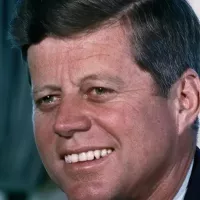
John F Kennedy JFK was the th U S President...
Sudan officially the Republic of the Sudan is a country...
The Union of Soviet Socialist Republics USSR existed from to...
India officially the Republic of India is a South Asian...
Barbie is a fashion doll created by Ruth Handler and...
Morocco officially the Kingdom of Morocco is a North African...
Trending

3 months ago Mike Vrabel on Patriots' Defense and Primetime Matchup Against Bills

2 months ago Breece Hall suffers injury during game, trade rumors emerge, fantasy football impact.

3 months ago Taysom Hill Nears 2025 Return After Injury: Giants vs. Saints Week 5
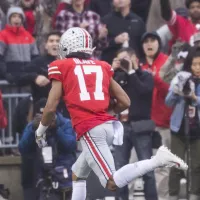
8 months ago Chris Olave Trade Rumors Surface Amidst Derek Carr's Retirement and Eagles Interest
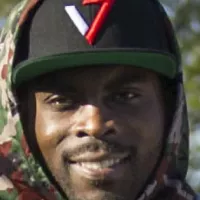
2 months ago Michael Vick vs. DeSean Jackson: Norfolk State faces Delaware State in Week 10
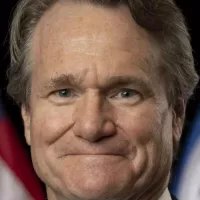
8 months ago Bank of America: Shareholders Approve Executive Pay, Elect Directors, and Equity Plan Changes
Popular

Stranger Things created by the Duffer Brothers is a popular...

XXXTentacion born Jahseh Dwayne Ricardo Onfroy was a controversial yet...
The Kennedy Center Honors are annual awards recognizing individuals and...
Turning Point USA TPUSA is an American nonprofit organization founded...

Candace Owens is an American conservative political commentator and author...

William Franklin Graham III commonly known as Franklin Graham is...
